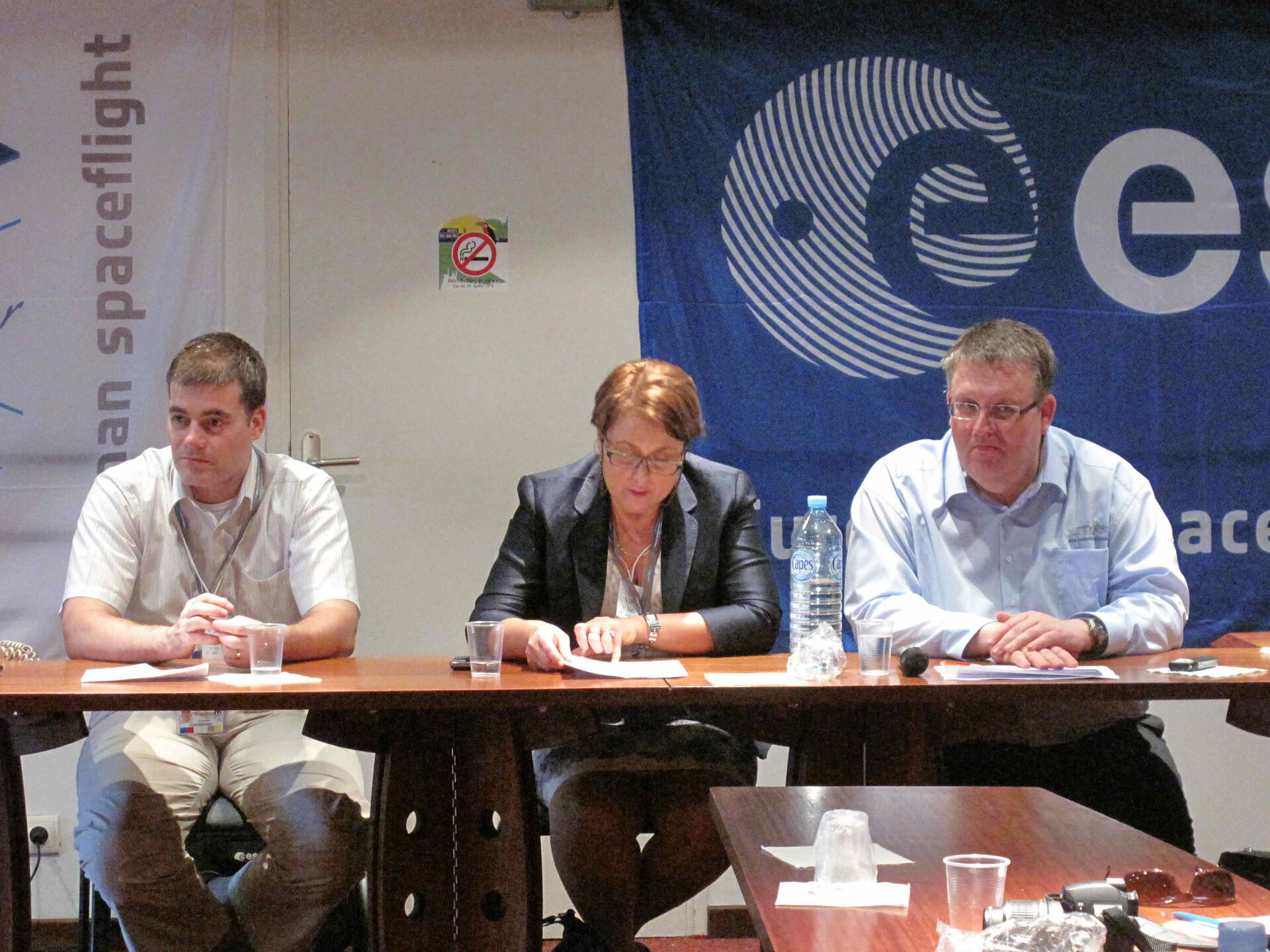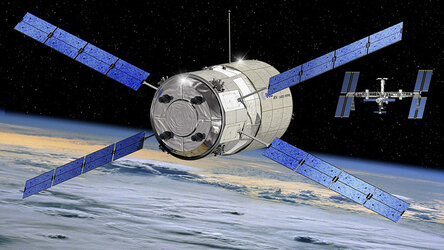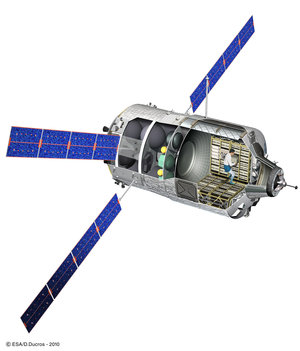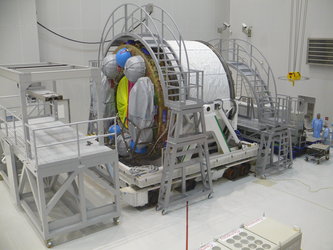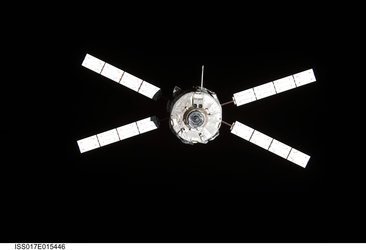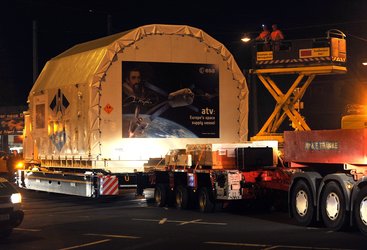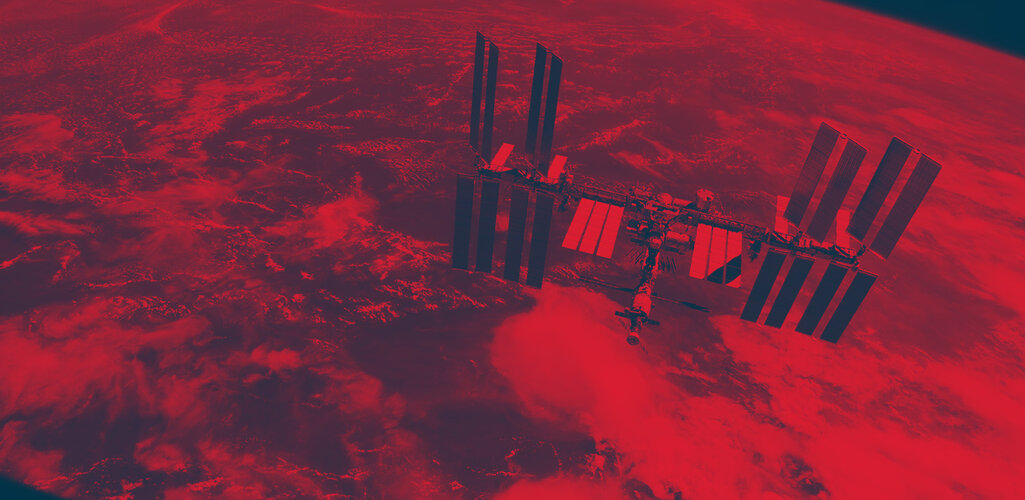Simonetta Di Pippo's speech in Kourou: "the launch of ATV-2 proves that Europe is an autonomous space power"
Ladies and gentlemen,
Today is a very important day for Europe in space. We are witnessing the launch of the space vehicle, which is contributing enormously to prove that Europe is an autonomous space power. ATV is the proverbial ‘icing on the cake’ of Europe’s efforts to implement a successful future of independent space transportation means.
Three years ago Jules Verne showed that the Europeans had the potentiality to support the ISS with a reliable and highly technologically-advanced cargo spacecraft. Today we are here to certify that the Automatic Transfer Vehicle is a fundamental pillar for the logistics of the Space Station of the future.
Johannes Kepler is the heaviest spacecraft ever launched by ESA. It can carry around 5 tonnes more of cargo than the Russian Progress-M and one and half tonnes more than the Japanese HTV. Furthermore, it has the largest reboost capability and it is a flexible, multifunctional spaceship, which combines the fully automatic capabilities of an unmanned vehicle with the human spacecraft safety requirements. It is indeed a free-flying laboratory, able to dock periodically with the ISS and even be used as a safe haven for the entire crew of the Station in case of emergency.
The astronomer Kepler was a strong and perseverant scientist, even if fortune not always smiled at him during his lifetime. But without him humanity would have had to wait much longer to enter in a brand-new path in the exploration of the universe. This applies also to the spacecraft that carries his name: through our perseverance, we have been able to stimulate European space industries to design technological breakthroughs that will prove essential both to accompany our continent out of the financially challenging moment we are living, and to enable us to inaugurate a new autonomous era of exploration.
Few days ago, at the last State of the Union address, president Obama recalled the years of the Space Race and declared that today is “our Sputnik moment”. Fifty years ago, when the first cosmonaut set his foot in space, the Americans “unleashed a wave of innovation that created new industries and millions of new jobs”, as president Obama put it.
I agree with him. Space research and exploration will produce also for Europe a ‘wave of innovation’ whose beneficial effects will be long-lasting for everyone on Earth. In the knowledge-based society we are all seeking, innovation plays a fundamental role – and we are fostering it with our successful space decisions.
The 15th of February seems a very appropriate day to launch our ATV, opening a new era for European space science. The influential scientist Galileo Galilei was born on a 15th of February in 1564, just few years before Kepler himself, and we all know how much both of them contributed to inaugurate a new and exciting era for science and astronomy. In a way, we owe them our very presence here today. With the same passion we share with them, I am sure they would be proud of what Europeans, together with the rest of nations, have been able to accomplish in space.
It is no secret that this year’s Shuttle retirement marks a distinctive change in the space business for all. Today, thanks to the ATV, Europe is taking the lead in the Station refurbishment and, in prospective, in the development of a wide variety of new space vehicles, characterized by atmospheric re-entry and download from the ISS. Thanks to the extreme flexibility of this spacecraft, we can think of a future re-entry vehicle, a fully-fledged crew transport means, which will enable us to support future orbital infrastructures and exploration missions, may be carrying people or supplies to Lunar orbits.
The docking of ATV, which will take place in a couple of weeks from now, marks also a climax moment of the MagISStra mission. It will indeed be Paolo Nespoli to welcome Johannes Kepler, acting as the prime astronaut to monitor the docking. But if all goes as we have planned, Paolo will not have much to do: ATV is the most ‘intelligent’ and complex craft Europe has ever produced, and it will navigate and dock automatically to the Station, proving once again the incredible technological sophistication we are capable of providing to the space engineering business.
With the ATV, Europe contributes in kind towards its share of the operational costs of the ISS. But the most innovative and complex spaceship ever developed in Europe is sailing on its own towards the future. We have committed to produce, after ATV-2, three more ATV to be delivered and launched, once per year. The next one is already at an advanced stage of production, and it is dedicated to another space pioneer, after Jules Verne and Johannes Kepler. Its name will be Edoardo Amaldi and we schedule to launch it in March 2012, when another European astronaut, André Kuipers, will be on board the Station for the fourth European long duration mission.
Within the frame of the extension of the ISS utilization until 2020 and beyond, with three flight assignments for European astronauts guaranteed from now to 2015 and with a reliable spacecraft like ATV to refurbish the Station, we are clearly demonstrating our capability to handle, in cooperation with the rest of the world, more missions and exploration programmes beyond the low Earth orbit. In prospective, ATVs could even evolve into a transfer vehicle for carrying tonnes of supplies and equipment, including space telescopes and planetary spacecraft, to Lunar and Martian orbits.
This is what we have been working for in the last years: to consolidate ESA as a reliable space power, autonomous and yet perfectly integrated in the collaboration of our partners. In a word, ‘autonomy for cooperation’.
We are now mature enough to face the new challenges posed by the space activities to come. We have worked hard, and we are working hard to continue the construction of our future. Let’s keep focusing on this goal for the years to come.
Allow me to wrap up by recalling something that Johannes Kepler himself wrote in 1596 in Mysterium Cosmographicum. I believe his words can guide us still today:
“We ought not to ask why the human mind troubles to fathom the secrets of the heavens. The diversity of the phenomena of nature is so great, and the treasures hidden in the heavens so rich, precisely in order that the human mind shall never be lacking in fresh nourishment”.


